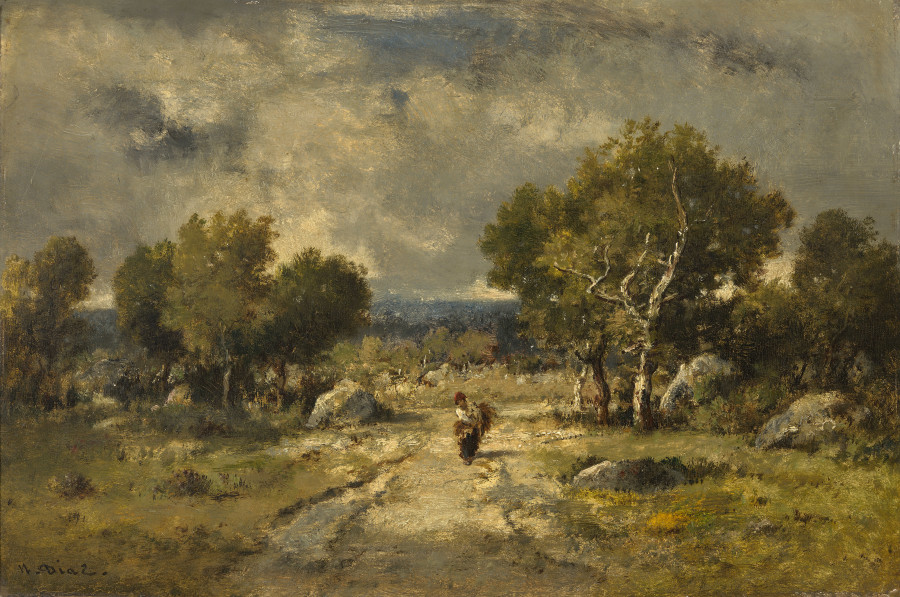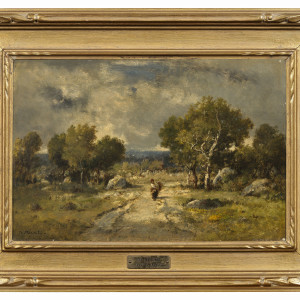Beginning in the 1840s, Narcisse Diaz de la Peña was one of the painters who followed Théodore Rousseau into the forest (Fontainebleau). Rousseau and Diaz, his most loyal disciple, often prepared a picnic to last them the entire day, as they set forth in search of inspiration.
Provenance
Newman Galleries, Philadelphia
Private Collection, Bryn Mawr, Pennsylvania
Catalogue note
Barbizon was more than just a school; it was a Movement made of artists with unique styles and specific interests who came together over a profound love of nature. The name of the school comes from the French village of Barbizon at the edge of the forest of Fontainebleau, which in the1820s became a famous destination for the growing leisure classes of Paris. What was once the hunting grounds for kings and their royal hunting parties became a lush sanctuary for artists. Known as “the branch-office of Italy” by a popular nineteenth-century writer, the Forest of Fontainebleau spanned 42,000 acres of dense woods, meadows, marshes, gorges, and sandy clearings. Beginning in the 1840s, Narcisse Diaz de la Peña was one of the painters who followed Théodore Rousseau into the forest. Rousseau and Diaz, his most loyal disciple, often prepared a picnic to last them the entire day, as they set forth in search of inspiration.
Diaz’s landscapes characteristically show the forest in shadowy seclusion, framed by dense woods and vividly colored foliage that lets through pockets of bright light. While aspects of Diaz’s classic landscape appear in the present work, there is a remarkable openness to the composition. With the vast forest behind her, a stick gatherer in a crimson hat walks into the light, illuminating the path she follows. An intense, bright sky with heavy clouds sits behind her, while a highly detailed tree to her left marks the end of the woods as she reaches a meadow ahead. Diaz’s famous golden hues shower the tranquil scene, leaving the viewer with a sense of wonder at the fabled Forest of Fontainebleau.




